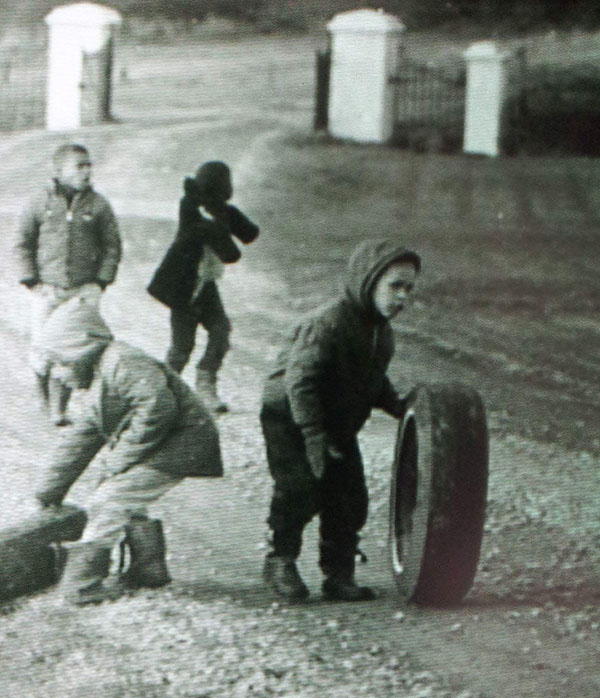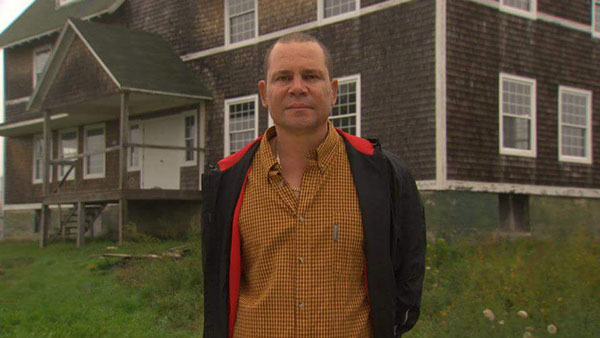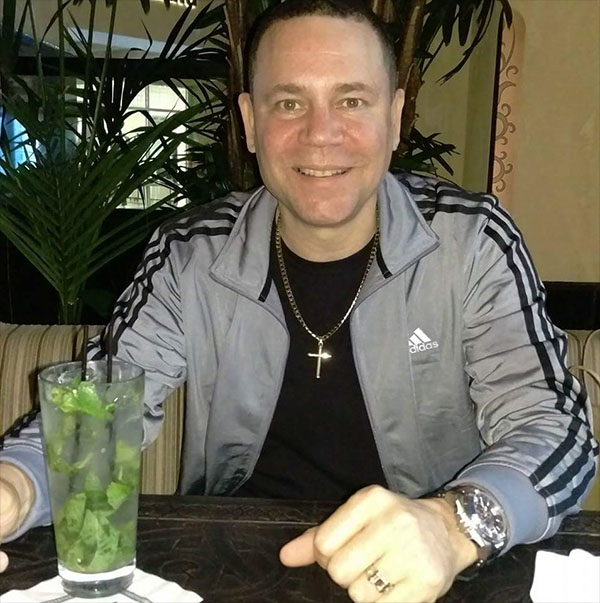By Neil Armstrong
PRIDE Contributing Writer
TORONTO, Ontario — Members of the ground-breaking Nova Scotia Home for Colored Children (NSHCC) Restorative Inquiry are in Toronto this week to meet with former residents, connect with advocates, parents and community members and take part in a community celebration.
Carolann Wright-Parks, coordinating director of the Restorative Inquiry and Tony Smith, founder and chair of Victims of Institutionalized Child Exploitation Society (VOICES), a support and advocacy group, will participate in the August 13 free community celebration at Daniels Spectrum which wraps up the visit that started on August 8.
The restorative inquiry was established in 2015 to explore, reveal and address the circumstances that led to the harmful legacy of abuse experienced by former residents of the NSHCC, as well as the related impact on families and communities.
It focuses on exploring systemic and structural issues that led to the wide scale abuse of former residents in the Home and will propose meaningful solutions, recommendations and changes to build a fairer, more equitable and just society; one free from racism and other forms of oppression.
In 2014, the Nova Scotia provincial government settled a class action lawsuit related to abuse within the Home.
Following the settlement of the class action suit, Premier Stephen McNeil offered an official apology to former residents of the Home on behalf of the Province of Nova Scotia.
In the apology, the premier acknowledged that the experience of the NSHCC was connected to the history of systemic and institutionalized racism against African Nova Scotians indigenous to Nova Scotia.
This is the first time in the history of Canada that a sitting premier has formally apologized for systemic racism against African Canadians.
RESTORATIVE INQUIRY IN TORONTO
Smith, who went public about his experience of abuse at the Home in 1998, says the inquiry will give the former residents of the Home an update of what’s going on and look at what kind of service plan can be put together for people within Toronto.
Some of the people within the Toronto community attended the sessions as well to see what they can offer in terms of resource, he said.
“Also we’re here to speak to various members of the black community and talk about our journey as far as dealing in Nova Scotia about systemic discrimination that plagued our problems, but also the negative impact it had on us when we were residents that were in care. And to talk about the struggle of what we’ve done — as a result we have a restorative inquiry.”
Smith said this is not a traditional public inquiry in which normally a retired judge makes recommendations and then a couple of them may be picked up but usually remain on bookshelves somewhere collecting dust.
“This process is that where we’re no longer adversaries of the Colored Home because we settled financially with our lawsuit with them for $5million and we received an apology from them. We also settled with the provincial government for $29million and we also received an apology from them as well, not only to the former residents but to the African Nova Scotian community for the systemic discrimination that had plagued the history of Nova Scotia so that was huge.”
He said the inquiry is “done up differently because it is looking at the abuse that we had suffered at the Colored Home but also using as a lens as to why the Colored Home come to light in the first place and that’s because back in the day the province didn’t care what happened to black orphans and the black community as well as people from the white community raised money and build this building to look after youth.”
Smith says the structure of the inquiry includes a council of thirteen people, ten of whom are able to vote, and there are two co-chairs – he is one of them.
The restorative inquiry team comprises nine staff and they will go to the different people that the council identifies, such as the department of justice, department of health, department of education, African Nova Scotian Affairs, Chief of Police, Halifax area, African United Baptist Association and staff from the Colored Home.
“We’ve been travelling all through Nova Scotia to the various black communities cause there are 44 black communities in Nova Scotia, the rural and urban areas. We look at what are the pressing issues and systemic discrimination looks differently in different areas so we’re inviting people to be a part of a process where their voice can be heard and the pressing issues will be then passed on to the council for priorities.
“And we will look at what are the pressing issues that we have to deal with. We then have a Reflection and Action team that’s made up of myself as well as the deputy ministers to the various departments that we’re talking about and then we look at what can be done in real time so we’re actually making changes as the inquiry is going on. And we’re also building relationships that we never had before with government, as far as the black community.”
Smith says it is a 2-and-one-half-year mandate and they are hoping to lay the foundation “as to what we can do as far as moving forward because we know we can’t eradicate a lot of these issues around racism in a short period of time.”
NOVA SCOTIA HOME FOR COLORED CHILDREN BUILT
In 1921 when the Nova Scotia Home for Colored Children was built it was the pride of the black community.

Tony Smith, seen playing as a child (rolling tire) with other orphans in the yard of the now-infamous school. Photo credit: Nova Scotia archives.
“It was an orphanage, then the per diem rate that the government gave to black kids was two-thirds less than what they would give to white kids. The salary that the staff was given was under minimum wage,” said Smith.
He said the staff would take food home for themselves and if a child had a visit with family and were given treats and clothes the staff would take them away and give them to their own kids – a culture that continued at the Home for a long time.
“There was physical abuse and sexual abuse and it showed up differently from the different time periods. And then the Home became a more of a group home in the early 70s and then the kids were bigger and then they hired male staff to look after the kids and the abuse became more violent, the males and females. It became a cesspool for pimps recruiting prostitutes.
“It was well known what went on in the Home within the black community because one of the threats to any black kid who was misbehaving was that if you continue to act this way we’re going to send you to the Colored Home.”
BREAKING THE SILENCE
“When I went public in 1998, I didn’t go public to know that it was going to come to this. I went public because of a friend of mine that I witnessed. He received a beating and a few days later he lost his life. It was very traumatic for us but we were told that if we ever spoke about this that we would be severely beaten by staff.”
Smith said as an adult he would oftentimes speak to government agencies and child protection workers about foster care in his time in the Home.
During this time a reporter called him to tell him that the Colored Home was looking to get heritage status from the government to get funding to renovate the old Home and they thought it would be nice to have a former resident’s perspective.
“I told him I don’t mind telling my story but it may not be the story he wants to hear and so I talked about my friend, Anthony Langford, and his death because I always vowed that someday I was going to tell his story — I just didn’t know how. As a result I had no idea of the magnitude to the abuse that went on. We had 160-some-odd individual lawsuit claimants, a lot of other people came onboard publicly to talk about the abuse.”
Smith said he asked his family for their permission to go public with his story because although he did not care about what people thought about him, he did not want to bring any shame to them.
“[CTV News] W5 did a story about the Colored Home throwaway children and so to me, I got very emotional because I’ve finally kept my word. I kept my word to Anthony because if it wasn’t for him I don’t think this would have happened because again people were afraid to speak about what took place in the Colored Home. For the years that we went public, the Nova Scotia community at large, and that’s the white community and various people, supported us and Nova Scotia has been known as the Mississippi of the north and we were really impressed that every time the pervious government, the [Darrell] Dexter government would oppose us having a public inquiry and whatever reasons he would give, some expert would come out of the blue and contest that. So there was a lot of public pressure on the Dexter government to do the right thing. The black community was in psychological shock and everybody is related to somebody through this whole process but we didn’t know that we had the support and then once we were successful we received a lot of accolades from various people.”
Speaking about his friend, Anthony Langford, Smith said he had a heart condition and people knew not to “mess with” him.
“There was always a pecking order – the tough ones – they used to make us fight each other and stuff like that. So what happened one Sunday we had dessert, which was kind of rare, and he [Langford] kept it because he wanted to watch a program Sunday evening. I don’t know if it was Tom Jones show or The Ed Sullivan show or something like that. One of the older guys wanted his cake and Tony didn’t want to give it to him and the staff wasn’t there. They usually leave us unattended and what not. They closed the door, the playroom, and they got Tony to go in the corner and they started throwing some books at him – Nancy Drew, Hardy Boys hard books.
“He was yelling stop and when they hit him ‘ouch’ and that kind of stuff. I was trying to get out to tell staff but other kids were holding me back. Then Tony slumped over and he was being non-responsive and people could see that there was something wrong so we called staff immediately. Staff came and he was rushed to the hospital that night and then a couple days later he died. And then I told them what had happened and we all were told to stop telling our lies and if we ever were to repeat that story that we would get a severe beating. I was a young kid; I was 7 at the time. It showed me that people can do whatever they want to you and his life didn’t matter therefore mine doesn’t matter. But I vowed someday I was going to tell his story I just didn’t know how so it came to me, I didn’t go looking for it.”
INDEPENDENT PANEL OR PUBLIC INQUIRY
He said the previous NDP government led by Dexter was doing everything it could to oppose a public inquiry.
At the time Smith told his colleague, Tracey Dorrington-Skinner, who was also a VOICES member that some of their own people would work against them.
“Sure enough, there was a group of people, self-proclaimed black leaders that called themselves the African Nova Scotia Leaders Think Tank and they were working with the Dexter government to oppose a public inquiry because they said it would cause a divide within the black community which is completely BS.”
Smith said the survivors of abuse had support from the black community no matter where they went but their supporters weren’t publicly coming out to demonstrate their support because the Home was considered a legacy within the black community.
When it was getting close to an election, the opposition parties – the Liberal and the PC – promised that if they were to get in power they would grant a public inquiry.
Smith said the late human rights activist, Rocky Jones, had invited him to a community meeting to talk about the pressing issues that were affecting African Nova Scotians.
At that meeting the 200 people in attendance pledged their support for the former residents and were willing to present a letter to the Dexter government saying they opposed the independent panel being proposed and wanted a public inquiry.
“I said to them at that time this is the first time that I felt connected to the black community because us, former residents, never felt connected to the black community because we were ostracized because we were known to live in the Home and that it was the black community that abused us and the black community that did nothing to protect us — that was moving for us and I shared that with the former residents.”
He said as soon as Premier McNeil got into power, in his first interview the premier said that one of his priorities was the public inquiry.
Premier McNeil called Smith and told him that he wanted the former residents to select the people for the design team to come up with the terms of reference and to pick the way they wanted the public inquiry to be run.
He said the premier did not want it to be perceived as government interference so that is the reason they chose a council and there is a member who is a special liaison with the Premier’s Office, government, and the council.
The council has complete autonomy from government, including the financial aspect, and it has been working very collectively.
VOICES
VOICES was formed in 2012 and held its first retreat, a four-day event, with people from across Canada.
He said there was a lot of stress and anxiety because people didn’t know each other and the pain that many were carrying was very visible.
“We tried to make the environment a safe one and slowly but surely people started to find their voice. There was a lot of laughing and crying, and singing and praying and sharing of stories the four days and at the end of it we realized that we’re no longer victims, we’re survivors.”
The elders blessed them and told them not to stop, which gave them more energy, and one year later they held another retreat in Truro.
“Their demeanour, their posture, their spirit, the light in their eyes, the confidence in their voice, it was just unreal and they wanted to go down and protest which they did. So only a year later you’re seeing people that wouldn’t even, when we first came couple days they wouldn’t speak and now they’re, you know, so we wore the badge of shame and now we wear the badge of honour.”
Their kids and grandkids have asked them if they can tell their stories at school.
Smith said they got certified as a class action and it was 300 former residents that came forward and Premier McNeil after he got into office had contacted their lawyers to talk about a settlement. The class action covers the period 1921 to 1989, almost 70 years at the Home.
The premier also gave them the responsibility to disburse the funds and they wanted to do it differently from having an investigator ask questions, which they thought would be more traumatic for former residents.
Instead, they opted for a facilitator that would help the former residents prepare for this meeting and an evaluator to listen to their story and put it on a scale of further harm.
“It would be what harms did you suffer in the Home and what kind of impact did it have on your life,” Smith said, noting that there were two parts of the claim – “What was the common experience? You may not have been abused but you witnessed the abuse and depending on the years that you were in the Home you would fit into that formula. You would have to prove that you were in the Home.”
SHARING EXPERIENCE WITH TORONTO
Smith said on August 9 they held a meeting with 40 service providers within the black community in Toronto and the similarities were interesting regarding what they are dealing with pertaining to youth.
“We were able to look at sharing our hurdles and obstacles that we were faced with and it comes back down to the same thing, that within the community there are so many different people that have so many different agendas when it comes to dealing with, like I’m hearing that people don’t want to be called Afro-Canadians, they’re called this and that, or they have a pocket of money to deal with their special needs.
“I said that we have the same thing because when I talk about the African Nova Scotian Leadership Think Tank, people working against us, and I said that you have to look at a way to listen to one another to come up to address the common themes of what you guys are dealing with.”
He told them that as long as they stay divided they would always succumb to the system “because that’s the way the system is successful by divide and conquer.”
The founder of VOICES said it is very shocking in this day and age how racism is showing up in the black communities in rural Nova Scotia “because people feel disconnected with the black community because of the way the people in authority have been doing the status quo from decades – they feel helpless and as they do speak up there’s not much jobs or opportunities so then they’re blacklisted.”
“There’s a lot of things that we have to acknowledge as far as our own people and then take responsibility that we don’t get caught up in this divide and conquer.”
Looking at himself as a fair-complexioned black person, Smith went to the Colored Home at the age of 5 in the 1960s and was there for a short time when he was told that he didn’t belong there because he wasn’t black, he was white.
They sent him to a white orphanage and after a short time there they told him that he didn’t belong there because he was black, not white, so he was sent back to the black orphanage.
“While I was living in the black orphanage because now you’re considered a second class citizen being black then they discriminated against me because of my fair colour by my own people. And then if you’re dark-complexioned you’re discriminated again by your own people.”
He said the former residents felt abandoned by their own people.
Smith said a number of former residents live across Canada and the US, especially here in Toronto.
In Nova Scotia they have a ‘tea and talk’ where they meet with former residents on a monthly basis and let them know that the restorative inquiry “is their home, is their space, is their place.”
“We want to hear their voice, we want them to be a part of what’s going on when we have to make decisions and stuff like that, their feedback. The overwhelming part about it is that they want their story to matter. They want to educate people; they don’t want to just tell their story for the sake of telling a story – they want to make a change. It also affects their kids and their kids’ kids. I didn’t realize how much the Colored Home has been connected by the black communities.”
In looking at systemic discrimination and racism, Smith said Lord Dalhousie had policies in place as to how to deal with black people and the Home was a real example of racism in it’s ugliest form.
He said racism and segregation are at the root of the reason the Home was built.
“The government didn’t care about black kids and then you look at even the abuse was going on and government knew about it they did nothing about it, again because it’s black kids. And then you look at how the system has failed us – the police see these kids running away but they’re constantly being brought back. They’re talking about the abuse they’re suffering and it’s being ignored.”
Smith has plans to take the inquiry to Montreal because they are many former residents there as well.
He said one of the things the inquiry is trying to do is get some kind of help service resource for those in Montreal, similar to what is established in Nova Scotia, as well as to get them to meet each other.
Smith, who describes himself as an introvert, said as time went by he became more confident because he knew it was very important to get the story out.
“I was very nervous about saying anything but it did get better that people said you’re very comfortable, but the thing for me I’m just telling the story and so I don’t have to think of anything other than telling the story.”
On Saturday, August 13, 4:00 p.m. – 6:30 p.m., the Nova Scotia Home for Colored Children Restorative Inquiry will hold a free community event, “Celebrate History with Us! African Canadian Community acknowledgment, solidarity and support for Nova Scotian survivors of abuse,” at Daniels Spectrum, 585 Dundas Street East (east of Parliament), 3rd Floor. For more information contact: ritorontovisit@gmail.com
 Pride News Canada's Leader In African Canadian & Caribbean News, Views & Lifestyle
Pride News Canada's Leader In African Canadian & Caribbean News, Views & Lifestyle







I just needed to put this out there as nothing really has been said. There were and are white children that also experienced horrific abuse at that place.It never seems to be mentioned. It has always been said that it is the black community that has been affected but that place housed many white and native children. It is NOT just a place where aftican canadian children were abused but children of ALL races!! We were told it was calld the coloured home because it was for children of all races. Just wanted to put this out there so the public does not think it was only african canadian children